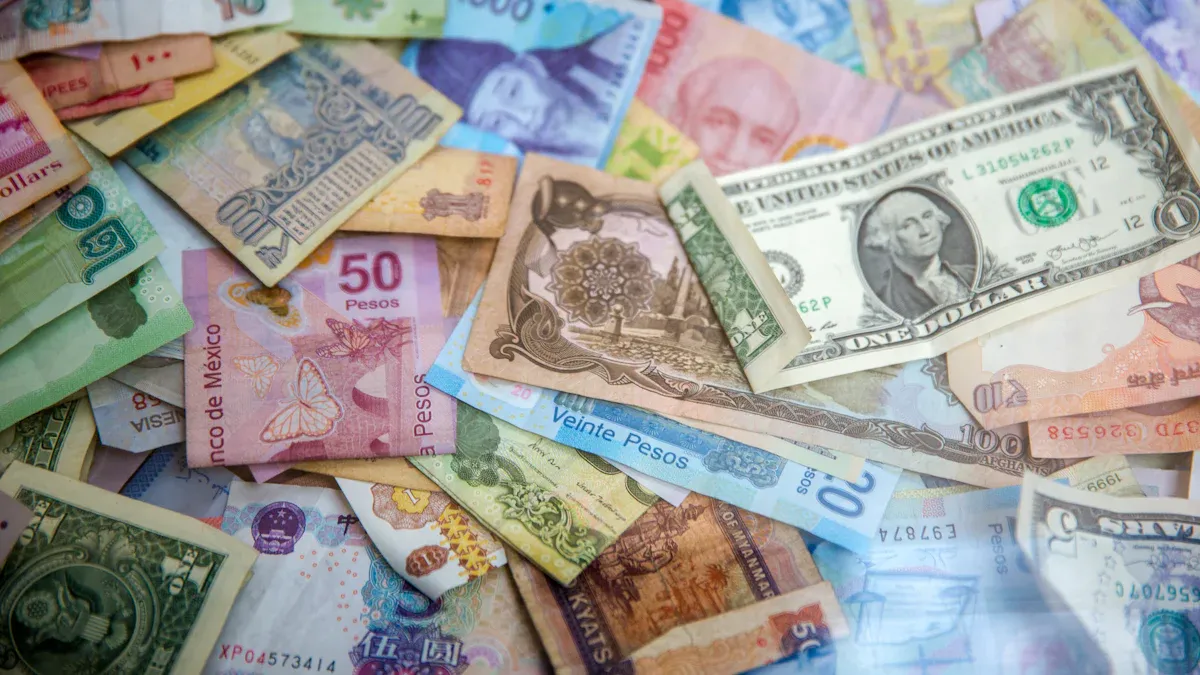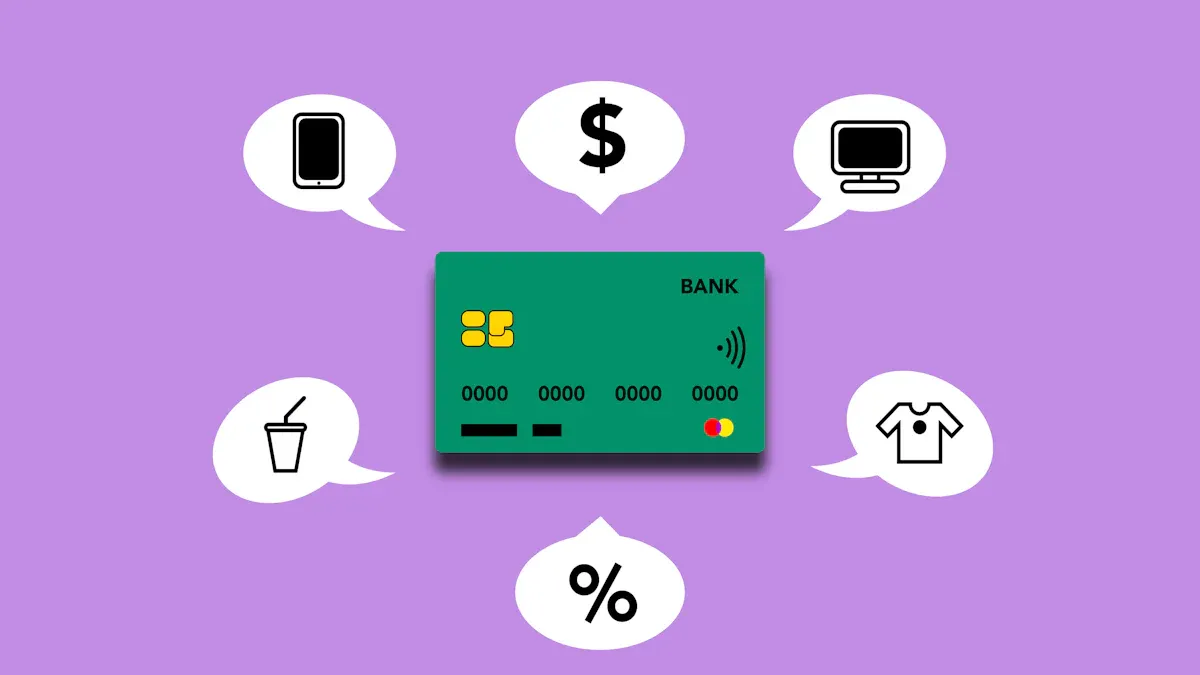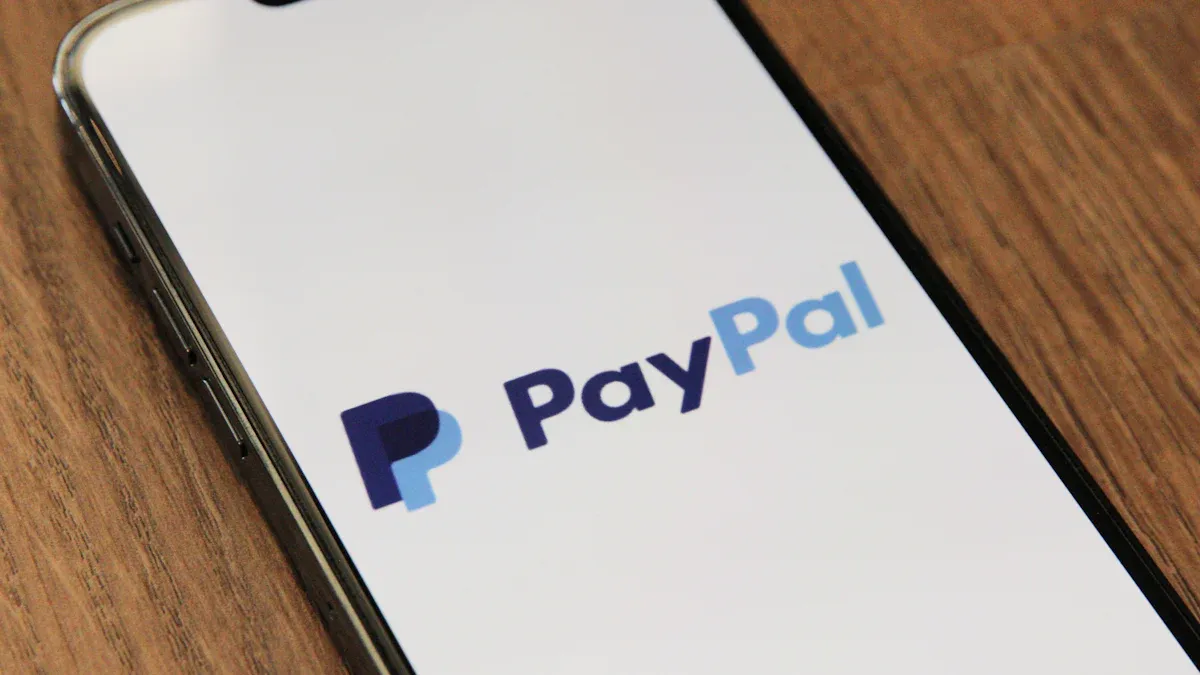- EasyCard
- Trade
- Help
- Announcement
- Academy
- SWIFT Code
- Iban Number
- Referral
- Customer Service
- Blog
- Creator
International Transfers via PayPal: Analysis of Fees, Limits, and Precautions

Image Source: unsplash
Using PayPal for international transfers seems simple and fast. But you need to understand that its fee structure and various limits directly affect your transfer costs and efficiency.
Fully grasping these key details will help you make informed decisions, ensuring each fund transfer is safer and more cost-effective.
Key Points
- Understanding PayPal’s international transfer fees is crucial, including transaction fees, currency conversion fees, and withdrawal fees.
- PayPal imposes various limits on transfers, such as country, amount, and transaction type, which you need to confirm in advance.
- When using PayPal for international transfers, always verify recipient information and protect your account security.
- Withdrawal fees to mainland China banks are high, so it’s advisable to accumulate larger amounts before withdrawing to save costs.
Comprehensive Breakdown of PayPal International Transfer Fees

Image Source: pexels
When you use PayPal for cross-border fund transfers, the fees are not a single item. They typically consist of multiple components, including transaction fees, currency conversion fees, and withdrawal fees. You need to understand how each fee is calculated to accurately estimate the total cost.
Personal Transfer (P2P) Fees
If you’re transferring money to friends or family overseas, the fees depend on your payment funding source.
- Paying with PayPal Balance or Linked Bank Account When you use these methods, PayPal charges a cross-border personal transaction fee. The fee calculation is as follows:
- The fee is 5% of the transaction amount.
- Minimum fee is $0.99 USD.
- Maximum fee is $4.99 USD.
For example: If you transfer $50 USD, the fee is $2.5 USD (50 * 5%). If you transfer $200 USD, the fee is capped at $4.99 USD, not $10 USD.
- Paying with Credit or Debit Card If you choose to pay with a card, costs increase significantly due to additional processing fees. The total fee comprises multiple components:
| Fee Type | Amount / Percentage | Description |
|---|---|---|
| Base Transaction Fee | 5% | Minimum $0.99 USD, maximum $4.99 USD |
| Funding Source Surcharge | 2.9% | Additional fee for using a card |
| Fixed Fee | Approx. $0.30 USD | Varies by recipient’s currency, covers card processing costs |
This means the total fee for personal transfers using a card is approximately 7.9% + a fixed fee, significantly higher than using a balance.
Merchant Receiving Fees
If you’re a merchant receiving payments from overseas clients via PayPal, you need to pay a commercial transaction fee. For PayPal accounts in mainland China, the standard fee structure is:
Receiving Fee = 4.4% + Fixed Fee
This “fixed fee” is not a single value; it depends on the currency of the payment received.
Examples of Fixed Fees for Different Currencies
- When receiving USD, the fixed fee is $0.30 USD.
- When receiving GBP, the fixed fee is £0.30 GBP.
- When receiving EUR, the fixed fee is €0.35 EUR.
Thus, if you receive a $1,000 USD commercial payment, the fee is approximately $44.30 USD ($1000 * 4.4% + $0.30).
Currency Conversion Fees
This is one of the most easily overlooked “hidden costs” in PayPal international transfers. When your transaction involves currency conversion (e.g., you pay in USD, but the merchant needs EUR), PayPal adds a markup to its wholesale exchange rate.
This markup typically ranges between 3% to 4%. This means the actual exchange rate you receive will be worse than the real-time market rate seen on Google or bank websites.
💡 Tip: Currency Conversion Markup by Scenario
This fee is embedded in the exchange rate, and you won’t see a separate “currency conversion fee” item in your transaction details, but it does increase your total cost.
Bank Withdrawal Fees
Withdrawing funds from your PayPal account to a bank account may also incur fees. These fees vary significantly depending on the bank’s location.
- Withdrawing to a U.S. Bank Account: Standard withdrawals are typically free. If you need funds instantly, you can opt for an “instant transfer,” but this incurs additional fees.
- Withdrawing to a Mainland China Bank Account: This is a costly operation.
⚠️ Note: When withdrawing from a PayPal account to a mainland China bank via wire transfer, you need to know the following:
- Fixed Fee: PayPal charges a $35.00 USD fixed fee per withdrawal, regardless of the amount.
- Minimum Withdrawal Amount: The minimum withdrawal amount per transaction is $150 USD.
This high fixed fee makes small withdrawals highly uneconomical. You must factor this cost into your financial planning.
Key Transfer Limits to Understand
Beyond fees, you must also be aware of the various limits PayPal imposes before making an international transfer. These limits involve countries, amounts, currencies, and transaction types, any of which could impact your transfer plans.
Supported Countries and Regions
PayPal’s services cover over 200 countries and regions globally, but not all regions have full functionality. Users in different countries have varying permissions for sending, receiving, and withdrawing funds.
You need to be aware that some countries have restricted functionalities.
Examples of Country-Specific Restrictions
- Monaco: Users can only send and receive cross-border payments.
- Malaysia: Currency restrictions apply. Users can send MYR to other Malaysian users but cannot send MYR balances to non-Malaysian users.
Additionally, some countries’ users can only receive funds and cannot send money outward.
| Country/Region | Functionality Restrictions |
|---|---|
| India | Only supports receiving and withdrawing |
| Mexico | Only supports receiving and withdrawing |
Before initiating a transfer, it’s best to check on PayPal’s website whether the recipient’s country supports receiving payments.
Transaction Amount Limits
PayPal sets caps on single transactions and total transaction amounts, primarily depending on whether your account is verified.
- Unverified Accounts If you haven’t linked and verified your bank account or credit card, your account is considered unverified. In this state, you can send a maximum of $4,000 USD per transaction.
- Verified Accounts After completing account verification, your transfer limit increases significantly. Theoretically, you can send up to $60,000 USD per transaction. However, this figure is not absolute. Due to regulatory compliance, PayPal may limit single transactions to $10,000 USD based on your region, the recipient’s country, and the transaction currency.
💡 Minimum Amount Consideration While technically PayPal allows sending as little as $0.01 USD, you need to consider withdrawal thresholds in practice. For example, withdrawing from a mainland China PayPal account to a bank card requires a minimum of $150 USD. This means even if you receive small payments, you need to accumulate this amount to withdraw.
Supported Currency Types
PayPal allows you to hold balances in multiple currencies and use them for global transactions. This provides convenience for handling multi-currency businesses. Below are some of the major currencies supported by PayPal:
| Currency Name | Currency Code |
|---|---|
| Australian Dollar | AUD |
| Canadian Dollar | CAD |
| Chinese Yuan | CNY |
| Euro | EUR |
| Hong Kong Dollar | HKD |
| Japanese Yen | JPY |
| Malaysian Ringgit | MYR |
| British Pound | GBP |
| Singapore Dollar | SGD |
| Swiss Franc | CHF |
| Thai Baht | THB |
| U.S. Dollar | USD |
Restrictions on Specific Transaction Types
To comply with global regulations and manage risks, PayPal’s Acceptable Use Policy explicitly prohibits or strictly restricts certain transaction types. If your transaction is suspected to involve these activities, your account may be frozen or closed.
Below are some strictly prohibited transaction types:
- Firearms or weapons
- Illegal gambling activities
- Prescription drugs or illegal narcotics
- Counterfeit or stolen goods
- Content involving child exploitation
- Pyramid or Ponzi schemes
In addition to these explicitly prohibited items, PayPal is cautious about certain high-risk industries, even if they are legal in some regions.
| High-Risk Category | Specific Business Examples | PayPal’s Main Concerns |
|---|---|---|
| Adult Content and Services | Adult entertainment websites, adult product retail | Sensitive content, difficulty in effective age verification |
| Gambling and Gaming | Online casinos, sports betting platforms | Complex regulatory environment, high addiction risk |
| Certain Financial Services | Cryptocurrency trading, some high-risk investments | High market volatility, money laundering risks |
Before receiving commercial payments, you must ensure your business type is not restricted by PayPal to avoid issues with frozen funds.
Operational Process and Key Considerations

Image Source: unsplash
After understanding fees and limits, you also need to master the correct operational methods and safety precautions. This ensures your funds reach their destination securely and quickly.
Step-by-Step International Transfer Guide
Whether using the website or mobile app, the process for sending an international transfer is highly intuitive.
- Log in to your PayPal account and find the “Send & Request” function.
- Enter the recipient’s email address, phone number, or username.
- Enter the amount you wish to send and select the receiving currency. The system will display the current transaction exchange rate.
- Choose your payment method, such as PayPal balance, linked bank account, or card.
- Finally, carefully review all details, including the amount, recipient, and fees, and click send once confirmed.
Account Security and Fraud Prevention
Protecting your account is the top priority for any financial operation. PayPal’s official guidelines provide clear security recommendations.
Key Measures to Protect Your Account
- Set a strong, unique password for your PayPal account.
- Update your contact information promptly, especially phone numbers and email addresses, to receive one-time security codes.
- Be wary of suspicious emails or texts requesting your password or personal information; PayPal will never ask for your password.
Enabling these security measures effectively reduces the risk of account compromise.
Verifying Recipient Information
Before transferring, accurate recipient information is critical. You typically need one of the following to identify the recipient:
If you accidentally send money to the wrong address, don’t panic.
- If the payment hasn’t been claimed: You can cancel the transaction directly from the “Activity” page.
- If the payment has been claimed: You need to contact the recipient immediately to request a refund.
Therefore, before clicking “send,” always triple-check the recipient’s information.
Expected Arrival Time
Transfers between PayPal users are typically instant. Funds appear in the recipient’s PayPal balance immediately.
However, withdrawing from a PayPal account to a bank account takes longer. This process may take 3 to 7 business days, depending on the bank’s processing speed and the recipient’s country.
PayPal indeed offers convenience for fund transfers, but its complex fees and restrictions cannot be ignored. The key to success lies in planning ahead.
Before initiating any international transfer, you should thoroughly understand the fee structure, confirm applicable limits, and follow security protocols.
Using the information provided in this article, you can compare different services and ultimately make the best choice for cost-effective and secure transfers.
FAQ
Why are withdrawal fees to mainland China banks so high?
When withdrawing to a mainland China bank account, PayPal charges a $35.00 USD fixed wire transfer fee per transaction, regardless of the amount. Therefore, you should accumulate larger amounts before withdrawing to reduce the cost per transaction.
What if I accidentally send money to the wrong person?
If the recipient hasn’t claimed the funds, you can cancel the transaction directly from the “Activity” page. If the funds have been claimed, you need to contact the recipient immediately to request a refund. Thus, always verify the recipient’s email address or phone number carefully before transferring.
Where can I see PayPal’s currency conversion fee?
You cannot see a separate “currency conversion fee” item in transaction details. This fee is embedded in the exchange rate PayPal provides, directly affecting the final amount you pay or receive.
Why is my single transfer amount limited?
Your transfer limit depends mainly on your account’s verification status. Unverified accounts typically have lower limits (e.g., $4,000 USD). You can increase your transaction limit by linking and verifying your bank account or credit card.
*This article is provided for general information purposes and does not constitute legal, tax or other professional advice from BiyaPay or its subsidiaries and its affiliates, and it is not intended as a substitute for obtaining advice from a financial advisor or any other professional.
We make no representations, warranties or warranties, express or implied, as to the accuracy, completeness or timeliness of the contents of this publication.




Contact Us
Company and Team
BiyaPay Products
Customer Services
is a broker-dealer registered with the U.S. Securities and Exchange Commission (SEC) (No.: 802-127417), member of the Financial Industry Regulatory Authority (FINRA) (CRD: 325027), member of the Securities Investor Protection Corporation (SIPC), and regulated by FINRA and SEC.
registered with the US Financial Crimes Enforcement Network (FinCEN), as a Money Services Business (MSB), registration number: 31000218637349, and regulated by FinCEN.
registered as Financial Service Provider (FSP number: FSP1007221) in New Zealand, and is a member of the Financial Dispute Resolution Scheme, a New Zealand independent dispute resolution service provider.



















